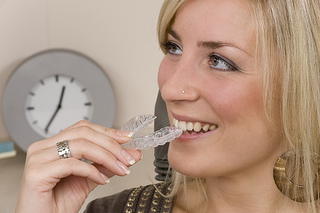The Purpose of a Dental Crown
October 14th, 2020

A dental crown, otherwise known as a cap, covers an infected tooth and can vary in function, depending on the position of the tooth. Crowns cover all the visible parts of a tooth and vary in size, appearance, and functionality.
A crown can be used to protect a weak tooth from breaking, hold together an already broken or worn tooth, cover the tooth with a large filling or dental implant, hold a dental bridge in place, or support a cosmetic modification.
Several types of crowns are available, depending on the tooth to be treated. Stainless-steel crowns are used on permanent teeth, usually as temporary measures in children because they’re more cost-effective for baby teeth that naturally come out over time.
Metal crowns are another option that includes gold alloys, or base-metal alloys. Metal crowns are notable for their ability to withstand biting forces, rarely break or chip, and therefore offer the best results in terms of normal wear and tear.
Porcelain fused to metal crowns most closely resemble a normal tooth and are a good choice for front or back teeth. Other, less common types include all-resin, all-ceramic, all-porcelain, and zirconia crowns.
If you’re getting a crown, you can expect a few things during your visit with Dr. Pohl. Crown placement usually requires two appointments. The first entails preparation to get an impression of the tooth, shape it, and place a temporary crown. The impression is sent to a lab where a technician makes the crown to be fitted.
During the second appointment, the high-quality porcelain crown is placed on the problematic tooth.
If you notice any signs of discomfort in your mouth, always let Dr. Pohl know by calling our Crescent Springs office. We will determine which type of crown is best for your tooth to give it the added strength it needs. Crowns can be very helpful for your oral health if you have any teeth that need extra support.






 Website Powered by Sesame 24-7™
Website Powered by Sesame 24-7™